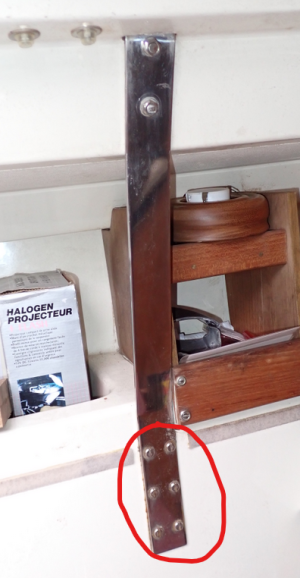Thistle
Well-known member
For various reasons I'm looking to replace one of the chain plates on my Jaguar 23.

At the top end it is bolted through the deck/cabin top moulding with both ends of the fastenings accessible. But what about the other end, circled on the photo above? The six fasteners go through the internal moulding. I can't get any access, even for an endoscopic camera, between this moulding and the hull so I can't see if there are nuts on the end of machine screws or if there is a block of wood for heavy wood screws to bite into or ... . Undoing wood screws would be a doddle; undoing machine screws with no access to the nuts would be a disaster.
Any suggestions for sensible approaches to the problem would be very welcome.
Thanks in advance.

At the top end it is bolted through the deck/cabin top moulding with both ends of the fastenings accessible. But what about the other end, circled on the photo above? The six fasteners go through the internal moulding. I can't get any access, even for an endoscopic camera, between this moulding and the hull so I can't see if there are nuts on the end of machine screws or if there is a block of wood for heavy wood screws to bite into or ... . Undoing wood screws would be a doddle; undoing machine screws with no access to the nuts would be a disaster.
Any suggestions for sensible approaches to the problem would be very welcome.
Thanks in advance.
